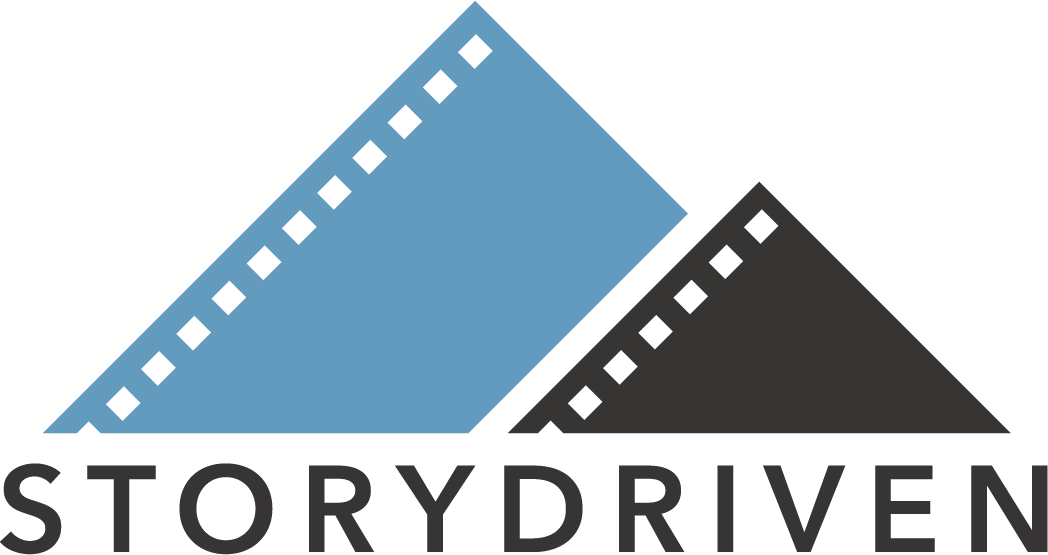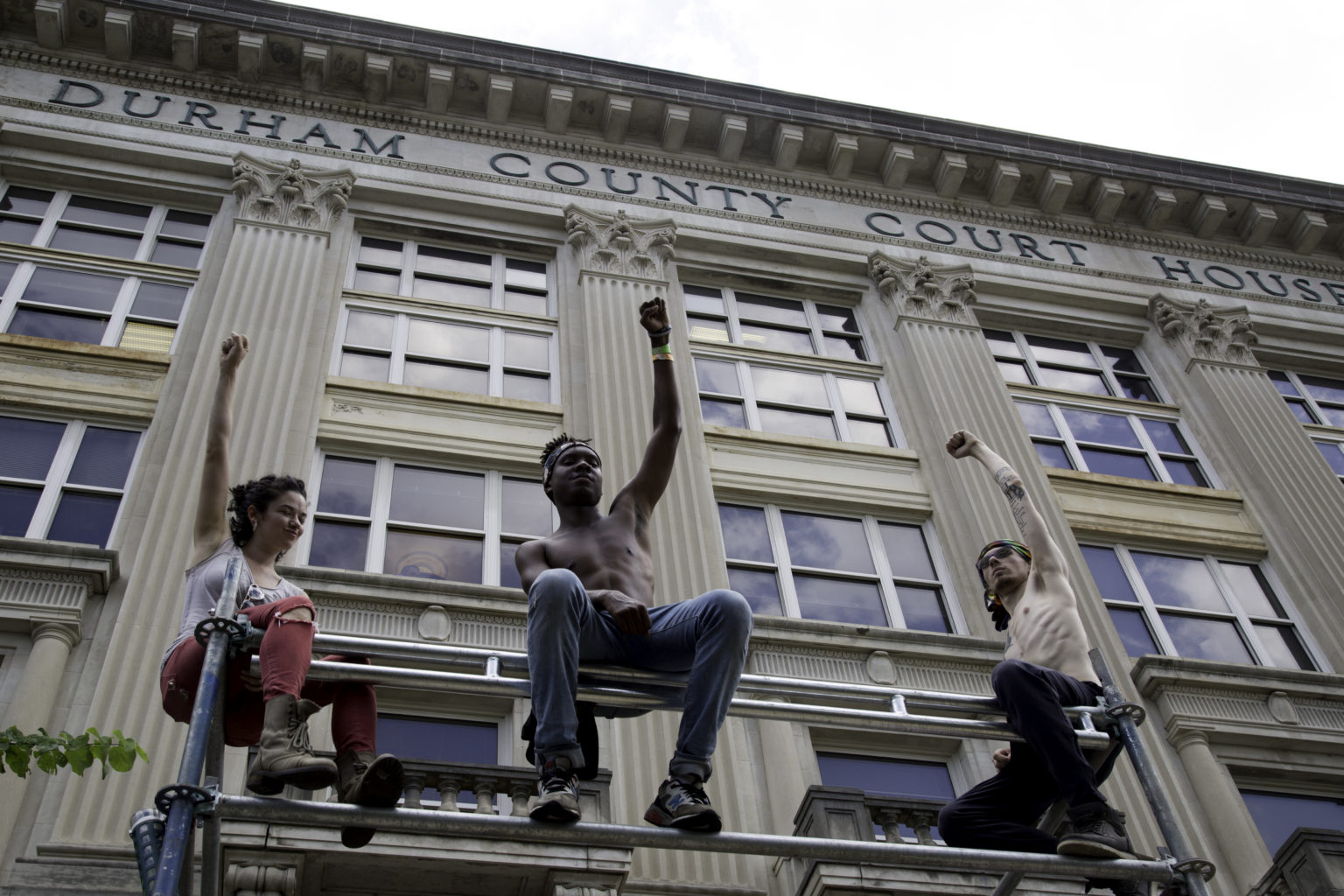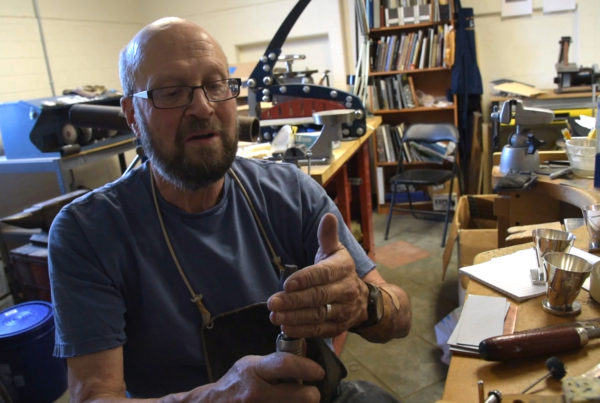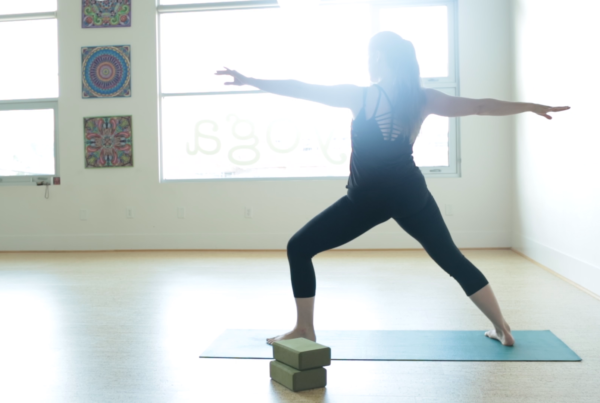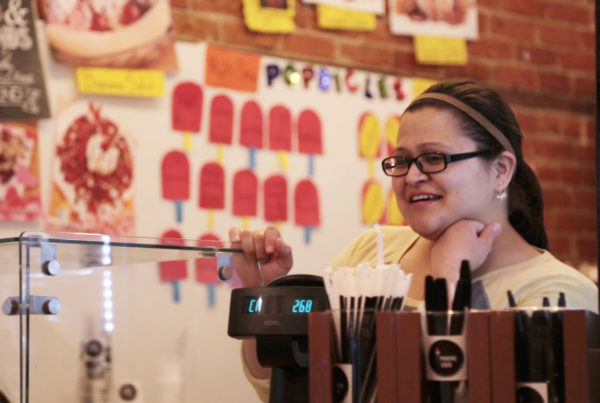MY DAD'S STORY
Following one of the many moves my dad’s family made during his adolescence, they encountered a neighbor in Fort Lauderdale with a bumper sticker boldly displaying the name ‘HITLER.’ As a hormone-enraged teenager and a Jew, my dad wanted to slash his neighbor’s tires. I imagined much worse watching the events in Charlottesville unfold.
His dad, Ed, was more experienced in dealing with anti-Semitism.
This was the mid-1970s, but not long before that, some beaches in south Florida still excluded Jews and people of color. Ed told stories of witnessing Klan marches. Dealing with that was part of his identity.
Ed did not ignore or confront the neighbor. He called local news and gave them a story. Cameras and reporters assembled on the neighbor’s lawn. The public shame ostensibly led to his removing the bumper sticker.
The neighbor’s hate and ignorance weren’t driven out, but the advertisement and normalization of hate receded.
I was nine when my dad told me this story, around the same time he put a camera in my hands and started teaching me photography. I remember listening at our kitchen table, but since then, a lot of the details have left me. Stories like this were a big part of my dad’s identity. He dealt with professors who balked at his last name. He encountered co-workers who assumed he was rich because he was Jewish. He always told these stories with an air of regret; in his mind, he did not confront them with enough elegance. I wish my dad and grandfather were still around to retell and unpack these stories, and help me learn from their conflicts. But they both passed away in 2015.
MY STORY
The word prejudice brings back memories of being called ‘Hanukkah boy’ in first grade, ‘kike’ in middle school, and ‘spic wannabe’ in high school (my mother is Puerto Rican). It dredges up the humiliation of being made to feel less for being born different. But those humiliations for me are seldom, and never physical. They are certainly not my normal, but like my dad, these moments represent part of my identity.
I moved to the Triangle almost a year ago. I’ve been working on West Main Street all that time, visiting Durham’s parks and patronizing its businesses. I explore Duke Gardens and every restaurant I can find. I’ve met professors at Duke and NCCU. I make documentaries about our citizens. I attend concerts and workshops. But I’ve learned more about Bull City in the last month than the preceding year.
As I watched the recent events in Charlottesville unfold, I wondered if I could muster the courage to risk discomfort, let alone my safety, to confront violent racism. I wondered if I could tell a person that the symbols and beliefs they hold dear are cowardly, un-American, and must be torn down for the good of our country. I wasn’t sure I could.
On Friday, August 18, I was ruminating on these questions: How could I sit back as our society’s ‘normal’ reverted to bold, open, Jim Crow racism? How could I make videos for clients, but not make and broadcast images of the battle against bigotry in our society? How could we tell Durham’s story and not include its relationship with confederate monuments? How could I look my future kids in the eyes as they learn about hatred and racism and say I did not find a way to combat prejudice when it reared its head in my backyard?
It was 11:00AM when my phone buzzed at work. I swiped open my messages and read that the Ku Klux Klan was marching in Durham within the hour. There is a counter protest organizing now. Is this going to be Charlottesville all over again?
"The ultimate measure of a person is not where they stand in moments of comfort and convenience, but where they stand at times of challenge and controversy."
- Dr. Martin Luther King, Jr.
When you’re filming within the chaos of a protest or demonstration, the adrenaline brings on an exquisite feeling of power and focus. Looking at everything through a lens, fear melts away. But pre-game adrenaline is messy. It’s equal parts anxiety and uncertainty.
My mouth dries out. My palms get sweaty. My mind races through a loop of fractured half-thoughts, a skipping hard drive sorting through the decisions ahead.
“Should I really participate in this?”
“Yes. You have to.”
“A person was killed in Charlottesville.”
“You can’t not do this.”
“Mom would want me to be safe.”
“Definitely don’t tell Mom about this.”
I raced to and from the bathroom, down to our basement, looking for people at our shared workspace to tell. Businesses downtown started shuttering their doors. Our workspace eventually announced an early closure and urged all businesses to evacuate.
11:26AM: The women organizing and leading the counter protest in Pinhook share intelligence of Klan sightings. The Klan is armed. We are not to cross any barricades or police officers who place themselves between us and the Klan. Our mission is not to antagonize or engage with the Klan, it’s to stand together and chant anti-hate messages. A woman on the stage casually packs together medical kits. I feel nausea and flop-sweats coming on. No one looks nervous, which is reassuring.
12:01PM: I go outside and join trained advocacy marshals as they hand out orange vests and discuss the strategy for keeping the counter-protest focused and contained. A line of parallel marshals will stand on either side of the crowd, leading and following the group. I introduce myself to one of the marshals at the front and ask if I can shadow her. We shake hands and she asks about my camera – she shares that she usually films, rather than leads, during these kinds of protests.
We leave Pinhook through the rear and double back to West Main Street, walking toward the Durham County Courthouse. I hear chanting ahead of us – the Klan may have already arrived. I spot a black banner with white lettering, but can’t make out what it reads. We’re heading straight for them. “Why aren’t the cops between us and them?” I say to myself.
The crowd holding that sign turned out to be another gathering of anti-Klan protesters. I breathed a sigh of relief and continued filming, waiting for the real confrontation.
DURHAM'S STORY
Durham’s identity, especially for a newcomer like me, is hard to comprehend. But learning key chapters of Durham’s story helps.
Durham is home to the largest slave plantation that ever stood in North Carolina – more than 900 people were enslaved at Stagville. Some people in Durham can trace their genealogy to those who were enslaved there.
Following Reconstruction, hundreds of statues commemorating the Confederacy were erected across the south, many of them used to intimidate and disenfranchise African Americans by paying homage to Confederates that, though their individual stories are complex, ultimately served a racist agenda. One of these statues, of an anonymous Confederate soldier, was erected outside the Durham County Courthouse in 1924.
It stood there for nearly a century.
Ninety three years later, as racists and white supremacists in our country gain ground in mainstreaming their agenda, protesters in Durham tore the statue down. This act was denounced by many in Durham as divisive, but when the sheriff’s office began executing warrants to arrest those responsible, hundreds showed up in solidarity to turn themselves in.
These stories help me understand the people and soul of Durham much more clearly. I can empathize with a man standing in a house or barn or field, knowing it’s where his ancestors were treated as property. I can empathize with a woman standing in front of the Durham County Courthouse in the shadow of a statue erected to intimidate her grandparents or great-grandparents. I can empathize when she asks herself, “how many generations of my family will endure white supremacy?” and decides to tear down that symbol of oppression by any means necessary.
I was not there when Durhamites tore down the Confederate statue. I live in Apex and didn’t hear about it until the next day. But it was not a difficult choice for me to join the counter-protest on 8/18. My identity, my story, and the stories of my family have granted me the belief that we are commanded to confront people who would otherwise erase us from this planet for how we were born.
If you’re reading this, you probably already know that the Klan never showed its hooded face that day. (Early on, a man made a Nazi salute, but he didn’t appear to be connected with any white supremacist or hate groups. He and his friend left quickly afterward.) I spent the afternoon filming and talking to other counter-protesters, celebrating our victory by forfeit. Whether our protest scared off the Klan or the rumors of the original rally were fabricated, I still don’t know.
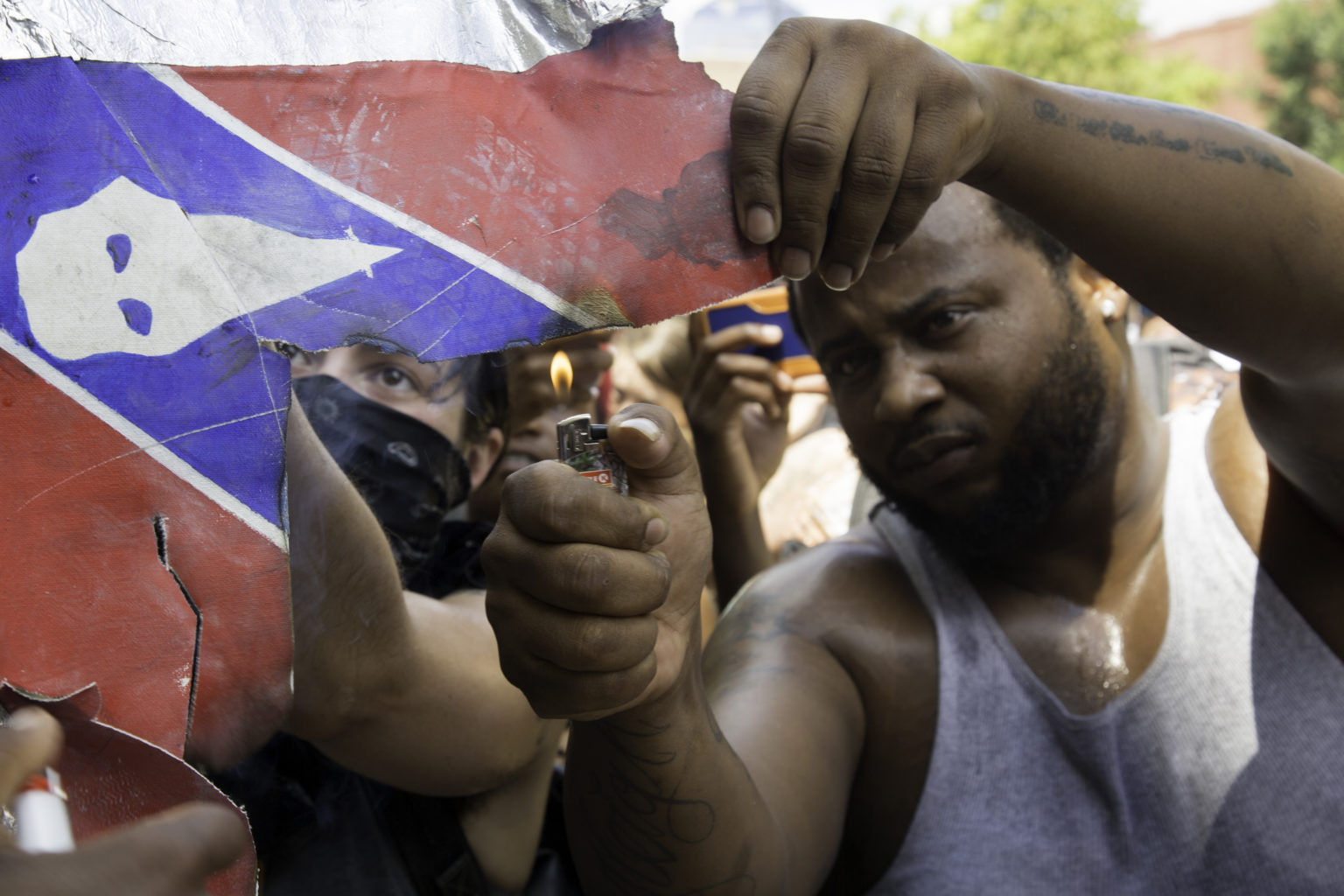
August 18, 2017. Protesters procured a confederate battle flag with Klan hoods replacing the stars. A crowd gathered to burn the flag at the foot of the Durham County Courthouse.
What I do know is that when push came to shove, Durham stood its ground against the normalization of bigotry. That day, Durham added another chapter to its story that spells out a definitive aspect of its identity – white supremacy is not welcome here. The KKK is not welcome here. I looked through the lens at hundreds of us, each with our own intricate stories, and bore witness as we cemented a chapter in Durham’s narrative – and through that, formed its identity.
With the series Reel Durham, StoryDriven has tried to responsibly and thoughtfully tell Durham’s story through the people who live here. However, through my experience filming that series, I never thought of myself as a character in Durham’s story.
By marching with other Durhamites, I felt more connected to this city and the people in it than ever before. I felt more connected to my dad and my grandfather. With tools they gave me, I’ve found a way to confront bigotry: with a camera and a story.
